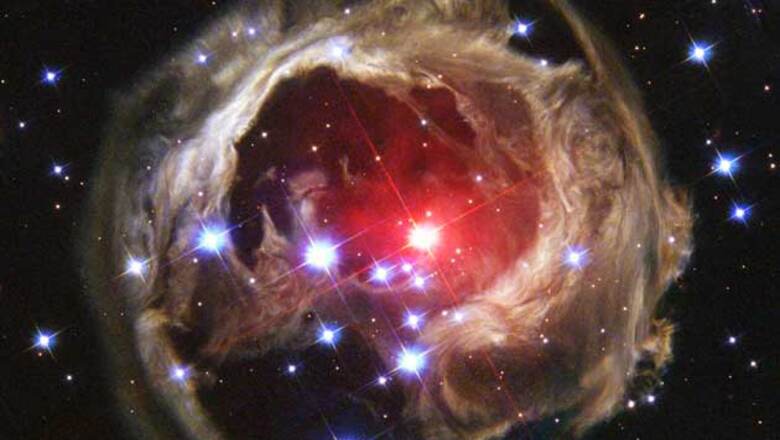
views
Washington: An Indian scientist and his Taiwanese colleague have discovered a blue super-giant star located in the constellation Virgo, far beyond our Milky Way Galaxy. Over 55 million years ago, the star emerged in an extremely wild environment, surrounded by intensely hot plasma (a million degrees centigrade) and amidst raging cyclone winds blowing at four million kilometres per hour.
Research using the Subaru Telescope, the National Aeronautics and Space Administration's (NASA) Galaxy Evolution Explorer (GALEX), and the Canada-France-Hawaii-Telescope (CFHT) revealed unprecedented views of the star formation process in this intergalactic context and showed the promise of future investigations of a possibly new mode of star formation, unlike that within our Milky Way.
About one thousand galaxies reside in a cluster filled with million-degree hot plasma and dark matter. The Virgo cluster, the nearest cluster of galaxies located about 55 million light years from Earth in the constellation Virgo, is an ideal laboratory to study the fate of gas stripped from the main body of galaxies falling into the intra-cluster medium.
The astronomer duo Dr Ananda Hota from UM-DAE Centre for Excellence in the Basic Sciences, India, and Dr Youichi Ohyama from Institute of Astronomy and Astrophysics, Academia Sinica or ASIAA, Taiwan focused on the trail of IC 3418 to explore a potentially new mode of star formation.
Hota has been collecting data from multiple telescopes since 2006 to understand this galaxy, which he first spotted in the GALEX data during his research. IC 3418 is a small galaxy falling into the Virgo cluster of galaxies at such a high speed (a thousand kilometres per second) that its blanket of cool gas strips off.
As it passed through the cluster, its stripped-off cool gas formed a 55,500 light-years-long trail that looks very much like the water vapour condensation trail from a supersonic jet's path. Hot plasma surrounds the trail of IC 3418, and it has not been clear whether the clouds of cool gas would vaporise like water sprinkled on a hot frying pan or condense further to form new young massive stars.
This process does not conform to star formation in our Milky Way Galaxy where massive stars develop in groups inside of stellar nurseries sheltered within giant cold molecular gas clouds.
Hota emphasised how important it is for astronomers to pay attention to this exotic system. "Precisely because the thermal and dynamic contrast of star formation that our research shows cannot be observed within our Milky Way, the details revealed by the Subaru Telescope's spectroscopy and the deep, sharp imaging of CFHT are opening up a new avenue for investigating the baffling fundamentals of star formation," Hota said.



















Comments
0 comment